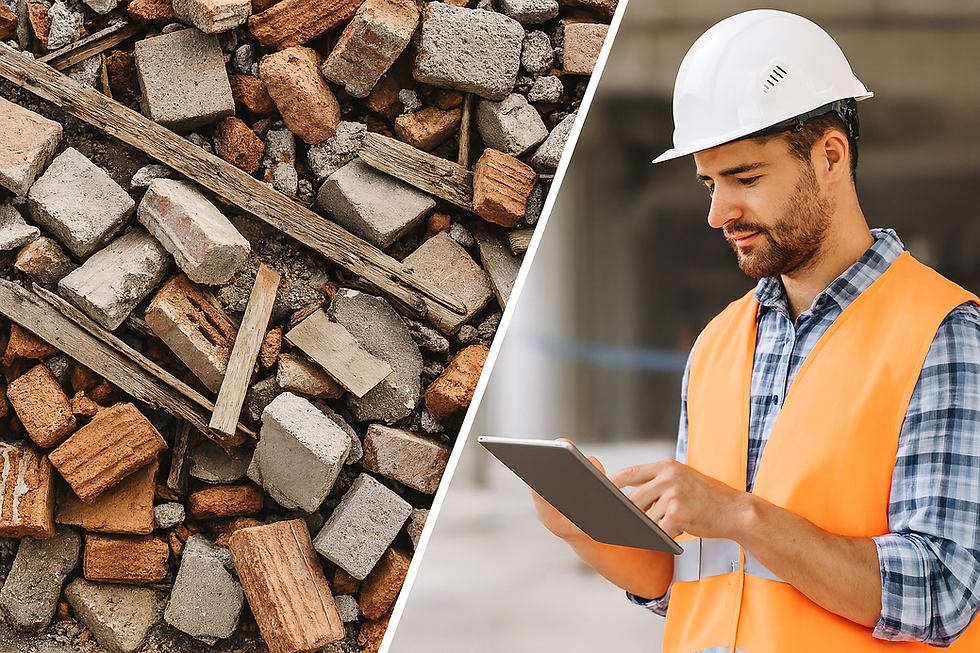Steps involved in Civil BOQ for Excavation work
- Sq-Feet Construction Software
- Dec 29, 2022
- 4 min read
Updated: Aug 10
Excavation is the process of moving earth, rock, and other materials from the ground level with tools and equipment. The excavation work includes excavation to approved depth, dressing of loose soil, making up to cut-off level, trenching, shoring, disposal of surplus excavated material, etc. In this blog, we will be discussing sub-activities involved in the excavation work and the materials used in each item.
1. Excavation – Soft Soil
Before the earthwork is started, the area to be excavated should be cleared of grass, roots of trees, and other materials. If the soil is unsuitable, then it should be dug to a depth at which a stratum of good hard soil is found. Water in trenches should be pumped out which is accumulated in the foundation during the excavation work and provision should be made for all extra excavation in dredging out water from the trenches. Shoring should be carried out properly to resist side pressure ensuring safety from slippage. The trenches should be compacted and dressed properly to provide levelled top surface.
2. Filling / Re-Filling
Earth used for filling shall be loose, free from brick-bats, stones, or other materials. Normally the excavated earth is used for filling but if such earth contains deleterious material, the same shall not be used. The fillings shall be spread in layers of 150 mm to 230 mm; each layer shall be watered, rammed, and compacted. During the earth filling, the earth is properly consolidated and an adequate amount of water is left on top of the filling. The relative density for the back fill earth shall not be less than 95% of the standard proctor density to the original earth unless it is specified in the BOQ or as approved by the Engineer.
3. Filling sand
The sand which is used for filling should be clean, free from dust, and of approved quality. The sand should be spread in layers of 150 mm; each layer shall be rammed and consolidated. Compaction should be done uniformly without damaging the underneath surface. The compacted sand of each layer should be watered properly. The density for filling sand should not be compacted to less than 95% of the proctor density unless it is instructed by the Engineer. The finished surface shall be levelled both transversely and longitudinally.
4. Dry rubble packing
Dry rubble packing is done to enhance the bearing capacity of the soil, for the construction of foundations. The base should be cleared of all loose materials and it should be properly compacted and levelled using rammers before laying 150 mm thick dry rubble. While laying the stones, the elongated side is placed with the broader base at the bottom in the vertical position. The stones should be placed with minimum voids, if any void is left between the packing then it should be filled with sand or hand-crushed metals. The dry rubble stones should be knocked off by using hammers and final ramming should be done to provide a levelled top surface.
5. Metalling / Rubble Soling / WBM / WMM
The surface on which metalling or rubble soling is to be provided should be cleared of all loose materials. Before laying the base, the surface should be levelled, watered, and compacted. Cable or pipe trenching should be done if required. The stone should be set as closely as possible and well-packed over the prepared surface. The interstices between the packing should be filled with sand or hand-crushed metals to obtain a compact surface. The surfaces should then be watered and consolidated with power or hand rollers and rammers. While laying and compacting the rubble soling, care should be taken so that concrete surfaces in contact with soling are not damaged.
6. Removal of soil
The excess or unwanted material should be immediately disposed off from the foundation. The soil from the excavated area is removed and it is transported to a permitted off-site plot. The surplus excavated soil should be disposed off by the contractor at his own cost as directed by the Engineer. Materials which are not required for the work should be removed at the time of excavation. The excavated material from foundation trenches should not be placed nearer than one meter to the outer edge of the excavation.
Important Notes:
The rates for excavation should include backfilling in the sides of foundation, trenches etc. in layers of 150mm to 230mm thick compacted up to 95% standard proctor density, dewatering and keeping it dry during excavation and construction.
For excavation in soil or hard murram, only the PCC area is to be measured with a depth of excavation as per the drawing. Additional excavation for working space, slope cutting should be included in the rate and no extra measurements should be paid.
In case of filling in foundation pits or trenches using earth brought from outside, the measurements should be paid in line with the excavation measurements. No extra measurements shall be paid for filling of pits excavated larger for working space or slopes
Provision should be made for adequate barriers, lighting, and gangways across open trenches etc. for the protection of the workman in the scope of a contractor at his own cost.



Comments